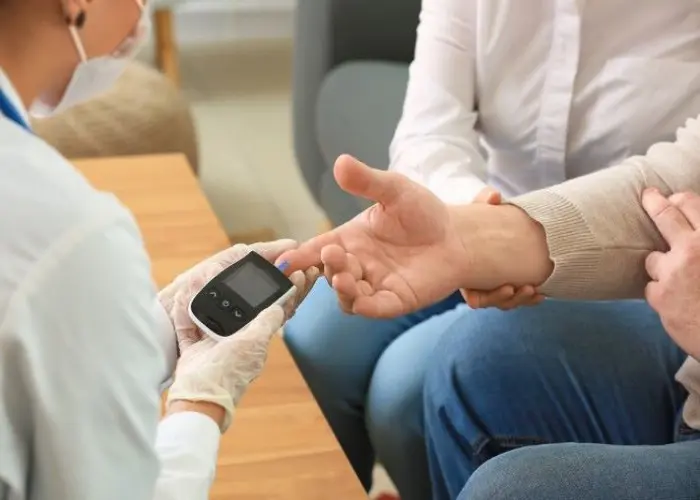 Welcome
Welcome
“May all be happy, may all be healed, may all be at peace and may no one ever suffer."
Spontaneous coronary artery dissection (SCAD)

Spontaneous coronary artery dissection (SCAD) is a rare condition in which the innermost layer of the coronary artery tears, causing blood to flow between the layers of the artery wall and potentially blocking blood flow to the heart. SCAD most commonly occurs in women, often without traditional risk factors for heart disease.
Symptoms of SCAD can include chest pain, shortness of breath, and fainting, and may resemble symptoms of a heart attack. The condition can be diagnosed using imaging tests such as angiography or intravascular ultrasound.
The treatment of SCAD depends on the severity of the condition and the presence of blockages in the coronary arteries. In some cases, conservative management such as medication and lifestyle changes may be sufficient. In more severe cases, angioplasty, stenting, or bypass surgery may be necessary to restore blood flow to the heart.
SCAD can be difficult to diagnose and treat and requires specialized care from healthcare providers with expertise in the condition. If an individual experiences symptoms of SCAD, it is important to seek medical attention as soon as possible to receive an appropriate diagnosis and treatment.
Research Papers
Disease Signs and Symptoms
Disease Causes
Spontaneous coronary artery dissection (SCAD)
The cause of spontaneous coronary artery dissection is unknown.
Disease Prevents
Disease Treatments
The goal of treatment for SCAD is to restore blood flow to the heart, manage chest pain and prevent recurrence. Sometimes, this healing will occur naturally. Or doctors might have to restore blood flow by opening the artery with a balloon or stent. Bypass surgery also might be used.
The treatments most appropriate for you will depend on your condition, including the size and location of the tear in the artery, as well as your signs or symptoms. Whenever possible, health care providers allow the damaged artery to heal on its own.
For some people, medications might relieve the symptoms of SCAD, so it might be possible to be treated with medications alone. If chest pain or other symptoms persist, other treatments might be needed.
Placing a stent to hold the artery open
If SCAD has blocked blood flow to your heart or if medications don't control your chest pain, your health care provider might recommend placing a tiny mesh tube (stent) inside your artery to hold it open. A stent can help restore blood flow to your heart.
To position the stent, the health care provider inserts a long, thin tube (catheter) into an artery — usually in your leg or arm — and guides the tube to the arteries in your heart. X-rays help the health care provider see where to place the catheter.
A wire with a deflated balloon is passed through the catheter to the tear in the artery. The balloon is then inflated, expanding the stent against your artery walls. The stent is left in place to hold the artery open.
Surgery to bypass the damaged artery
If other treatments haven't worked or if you have more than one tear in an artery, your health care provider might recommend surgery to create a way for blood to reach your heart.
Coronary bypass surgery involves removing a blood vessel from another part of your body, such as your leg. That blood vessel is stitched into place so that it diverts blood flow around your damaged artery.
Medications
After SCAD, your health care provider might recommend medications, including:
- Aspirin. Aspirin might help prevent cardiovascular disease problems after SCAD.
- Blood-thinning drugs. Drugs that reduce the number of blood-clotting platelets in the blood (anticoagulants) can reduce the risk of a clot forming in the torn artery.
- Blood pressure drugs. Drugs used to treat high blood pressure can lower the heart's demand for blood, reducing the pressure in the damaged artery. You might take blood pressure drugs indefinitely to reduce the risk of another SCAD.
- Medications to control chest pain. These medications (nitrates and calcium channel blockers) can help treat chest pain you might have after SCAD.
- Cholesterol drugs. People who have high cholesterol levels and other risk factors might need medications to control their cholesterol levels.
Cardiac rehabilitation
After treatment for SCAD, you'll need regular follow-up appointments with your health care provider to monitor for changes in your condition. Your provider is likely to recommend cardiac rehabilitation.
Cardiac rehabilitation is a customized program of exercise and education that is designed to help you recover from a serious heart condition. The program often includes monitored exercise, nutritional counseling and emotional support.
Disease Diagnoses
Disease Allopathic Generics
Disease Ayurvedic Generics
Disease Homeopathic Generics
Disease yoga
Spontaneous coronary artery dissection (SCAD) and Learn More about Diseases

Carcinoma of unknown primary

Dust mite allergy

Epidermolysis bullosa

Diabetes insipidus

Dog Bite

Leukoplakia

Cutaneous T-cell lymphoma

Reactive arthritis
Spontaneous coronary artery dissection, scad, স্বতঃস্ফূর্ত করোনারি ধমনী বিচ্ছেদ, এসসিএডি
To be happy, beautiful, healthy, wealthy, hale and long-lived stay with DM3S.
